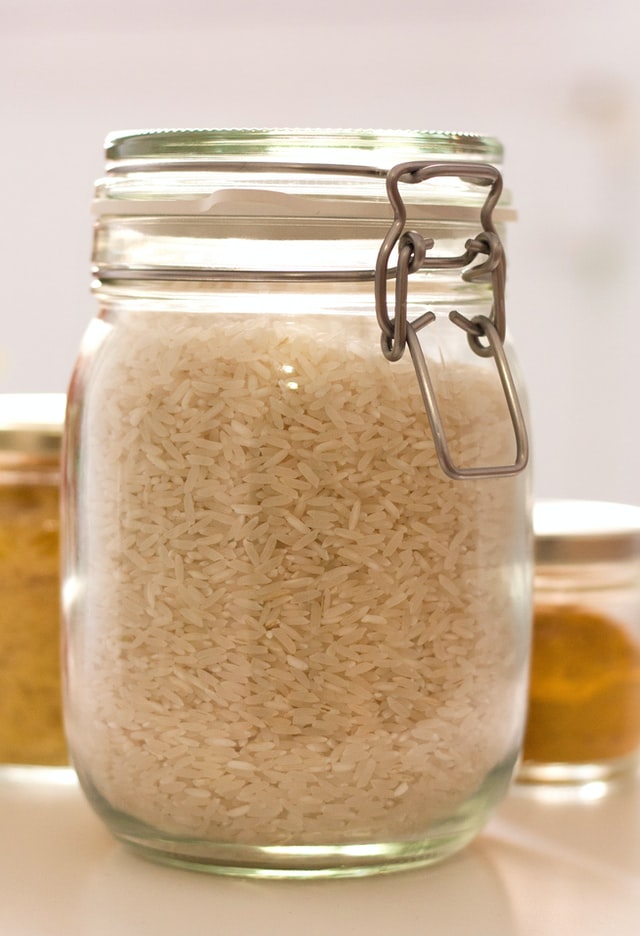HL writes: “A parishioner at our parish has been noticing rice being scattered at our shrine of the Holy Innocents, in front of the statue of our patron saint, and on the hand rail leading to the rectory. I’m wondering if there’s any foul play involving occultic practices. Any insight would be greatly appreciated.”
Because of the long history of the use of rice in pagan worship as well as its use in witchcraft rituals, the presence of rice scattered around parish shrines should be brought to the pastor’s attention.
Most of us are probably familiar with the practice of tossing rice over a couple after their marriage ceremony. This custom is based in the pagan belief that rice, a symbol of prosperity and fertility, will bring abundance to the newlyweds. Because of the superstitious nature of this practice, and its roots in paganism, many Catholic parishes discourage the throwing of rice at weddings and request that families use bubbles or bird seed instead.
However, these beliefs are still very much alive in some parts of the world. For example, Hindus sprinkle rice over their newlyweds for the same reason. In some areas, the couple stands on a pile of rice while being wed. And because rice is believed to ward off demons, the couple will also sprinkle it around their new home for protection and to insure blessings.
Later, when the couple has children, rice is used in a first-feeding ritual in which it becomes the first solid food placed in the baby’s mouth, usually around the sixth or seventh month of life. The rice is specially prepared by the mother or grandmother of the child while chanting appropriate Vedic mantras to the gods.
Rice enjoys equal significance in the Shinto religion of Japan. As this site explains, “Most Shinto ceremonies are deeply connected with agriculture, especially rice farming, which according to Japanese mythology was given to people by a deity from the plain of high heaven.”
This explains why traditional homes in Japan often have a special “god shelf” called a kamidama which is situated in the northeast corner of the house which is considered the weakest corner in Shinto geomancy. The shelf is placed high on the wall and contains an assortment of objects of worship, including the figure of the particular kami or deity that the household worships.
“Worship at the kamidana includes offering simple prayers, food for the gods (rice, fruit, water), and flowers,” this site explains. “After the rice harvest, Japanese farmers take handfuls of rice and throw them at the shrine and its gods in thanks for this year and with hopes for a better year ahead.”
Superstitions affixed to rice are many and varied throughout the world. In Asia, rice is considered to be an ancient symbol of wealth, success, and good health. Because its presence in the house is considered to represent the wealth of the home, it is treated with upmost respect.
For example, people store their rice in an expensive container to symbolize respect for their wealth. Preferably, the container should be deep to represent deep pockets. Shallow containers are considered to be a bad omen which could leave a household without enough money.
More disturbing is the use of rice in spell-binding rituals in witchcraft. For example, in a ritual intended to attract a true love, a small bowl is filled with uncooked rice while a second bowl, half filled with water, is set on the floor at the person’s feet. The person stands with her back to the water bowl, then fills both hands with the rice while clearing the mind of everything and letting go of all hopes and expectations about the identity of their true love. She is then instructed to pass the rice, grain by grain over the left shoulder into the bowl of water while reciting a chant. When the last grain is tossed, she is told to observe the pattern made by the rice in the water which could reveal the identify of the true love.
Considering the above, if you find rice scattered around the shrines in parish, don’t jump to conclusions. It may be a person of eastern origin who is simply using rice to praise God and our saints because it is part of their culture. My recommendation is to bring this situation to the attention of the pastor and let him decide the best way to address it.
© All Rights Reserved, Living His Life Abundantly®/Women of Grace® http://www.womenofgrace.com










